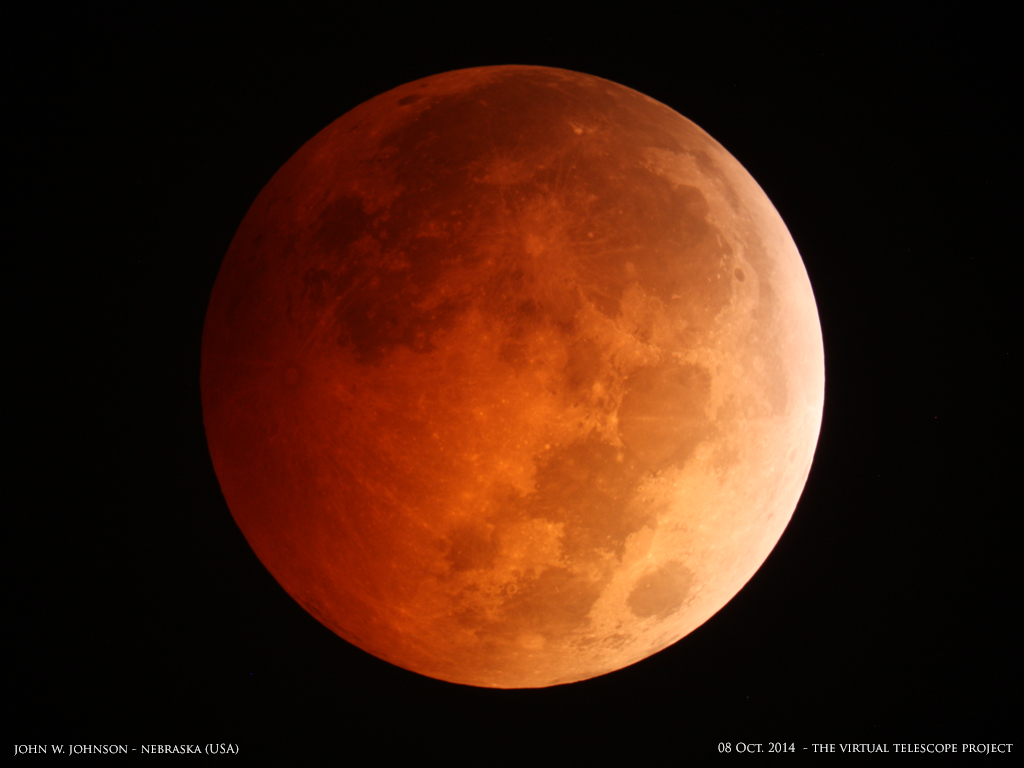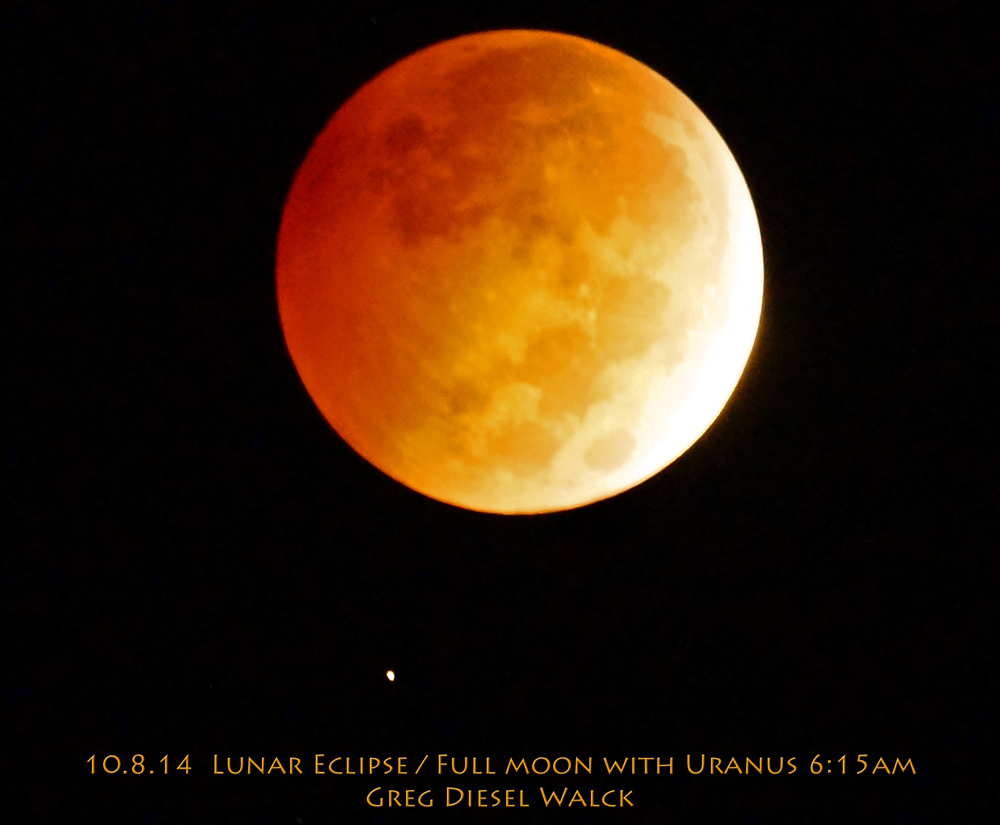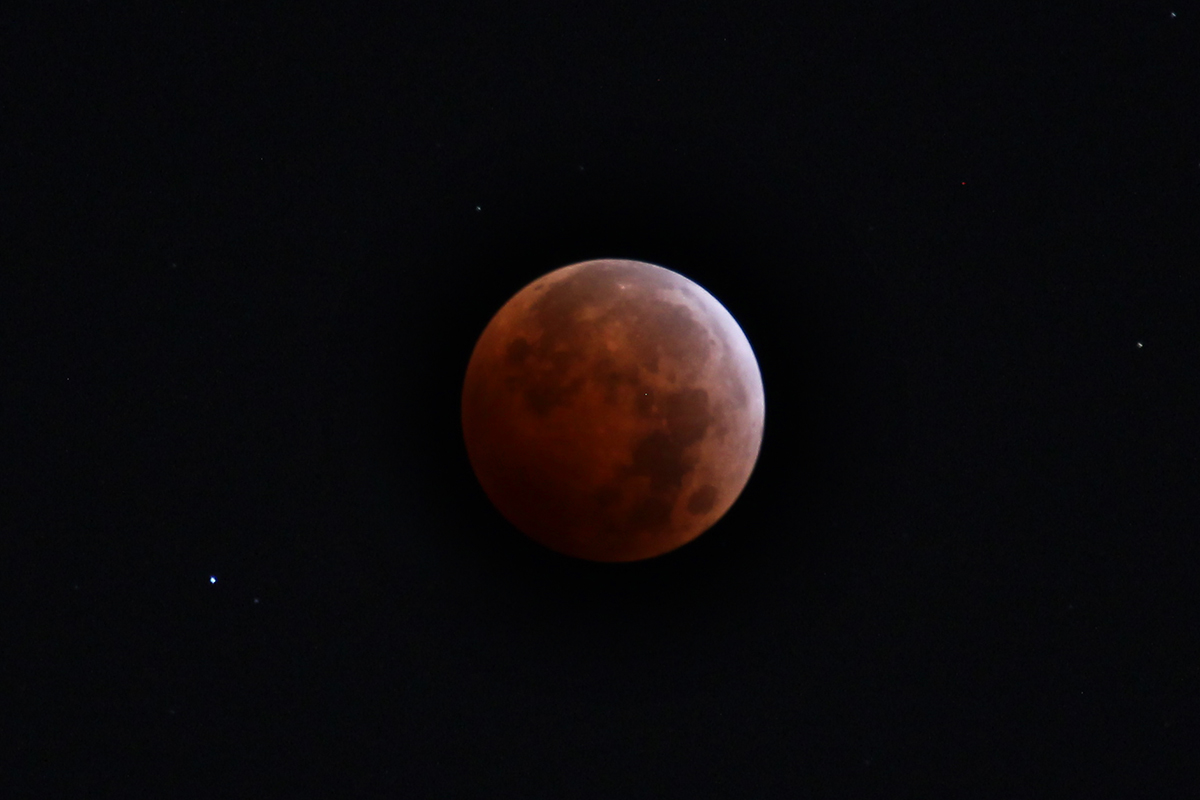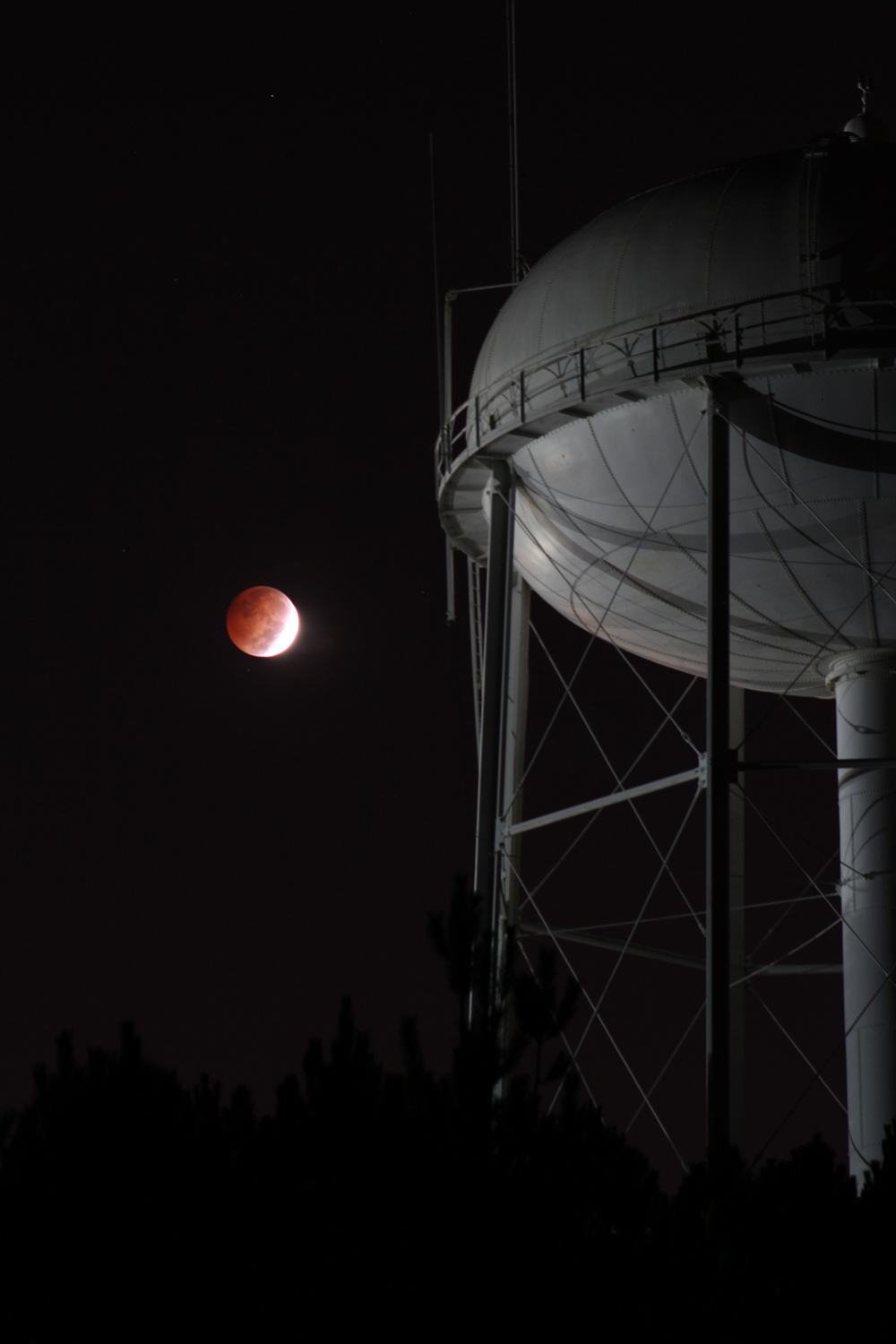'Blood Moon' Photos: Total Lunar Eclipse Thrills Skywatchers

The full moon took on a spooky red hue in a pre-dawn total lunar eclipse Wednesday (Oct. 8) to the delight of skywatchers who managed to snap stunning photos of the "blood moon."
The total lunar eclipse of Oct. 8 was visible to observers in North America, western South America, parts of East Asia, Australia and other parts of the Pacific, weather permitting. The lunar eclipse is also the second of four consecutive total eclipses of the moon that make up a unique "tetrad."
During the eclipse, the moon passed into the darkest part of Earth's shadow, which caused the moon to glow with an eerie copper color. This color shift has caused some people to dub the natural satellite a "blood moon" during total lunar eclipses. The moon's temporary color also created an incredible, unique sight to behold for photographers on the ground. [See more amazing pictures of the Oct. 8 blood moon]
"The moon was a brownish red color," Christina Ryan told Space.com of her view of the eclipse from Elkhart, Indiana. "Very beautiful lunar eclipse. I am happy to have been able to witness it."
Some intrepid observers might have also been able to capture the planet Uranus near the eclipsed full moon as well.
The lunar eclipse reached totality just before dawn for observers on the East Coast of the United States, but well-placed skywatchers on the West Coast may have seen the lunar eclipse rise in a totally dark sky during the wee hours of Oct. 8.
Some astrophotographers in California captured stunning views of the blood moon. Thomas Warloe took an incredible photo of the moon in the middle of totality glowing red in a sky dotted with stars from Berkeley, California.
Get the world’s most fascinating discoveries delivered straight to your inbox.
Photographers from Australia, New Zealand and Hawaii also snapped images of the total lunar eclipse.
"I am lucky to have such a clear night to observe this eclipse!" Jared Kizer told Space.com of his view of the eclipse from Queensland, Australia.
If you missed this total lunar eclipse, you might have another chance to see a blood moon rise 2015. The next eclipse in the tetrad series is set to grace the skies in April 2015, with the final in the tetrad occurring in September 2015.
Lunar eclipses occur when the full moon passes through Earth's shadow. Instead of blotting out the moon entirely, the moon turns a rusty color because of the way light from the sun seeps through the planet's shadow.
The color of the moon during a total lunar eclipse is also a good measure of what's happening in Earth's atmosphere at the time. If the moon is a darker shade during the eclipse, it could mean that the atmosphere is polluted from volcanic activity or other events.
This total lunar eclipse is only one in a series of amazing skywatching events happening in October. On Oct. 23, observers in most of North America will have the chance to see a partial solar eclipse. Comet Siding Spring is also set to make a close flyby of Mars on Oct. 19, and the Orionid meteor shower is expected to peak overnight from Oct. 21-22.
Editor's Note: If you snap an amazing picture of the Oct. 8 total lunar eclipse, you can send photos, comments, and your name and location to managing editor Tariq Malik at spacephotos@space.com.
For most of human history, the moon was largely a mystery. It spawned awe and fear and to this day is the source of myth and legend. But today we know a lot about our favorite natural satellite, and we think you should, too.
Moon Master: An Easy Quiz for Lunatics
Follow Miriam Kramer @mirikramer and Google+. Follow us @Spacedotcom, Facebook and Google+. Original article on Space.com.









